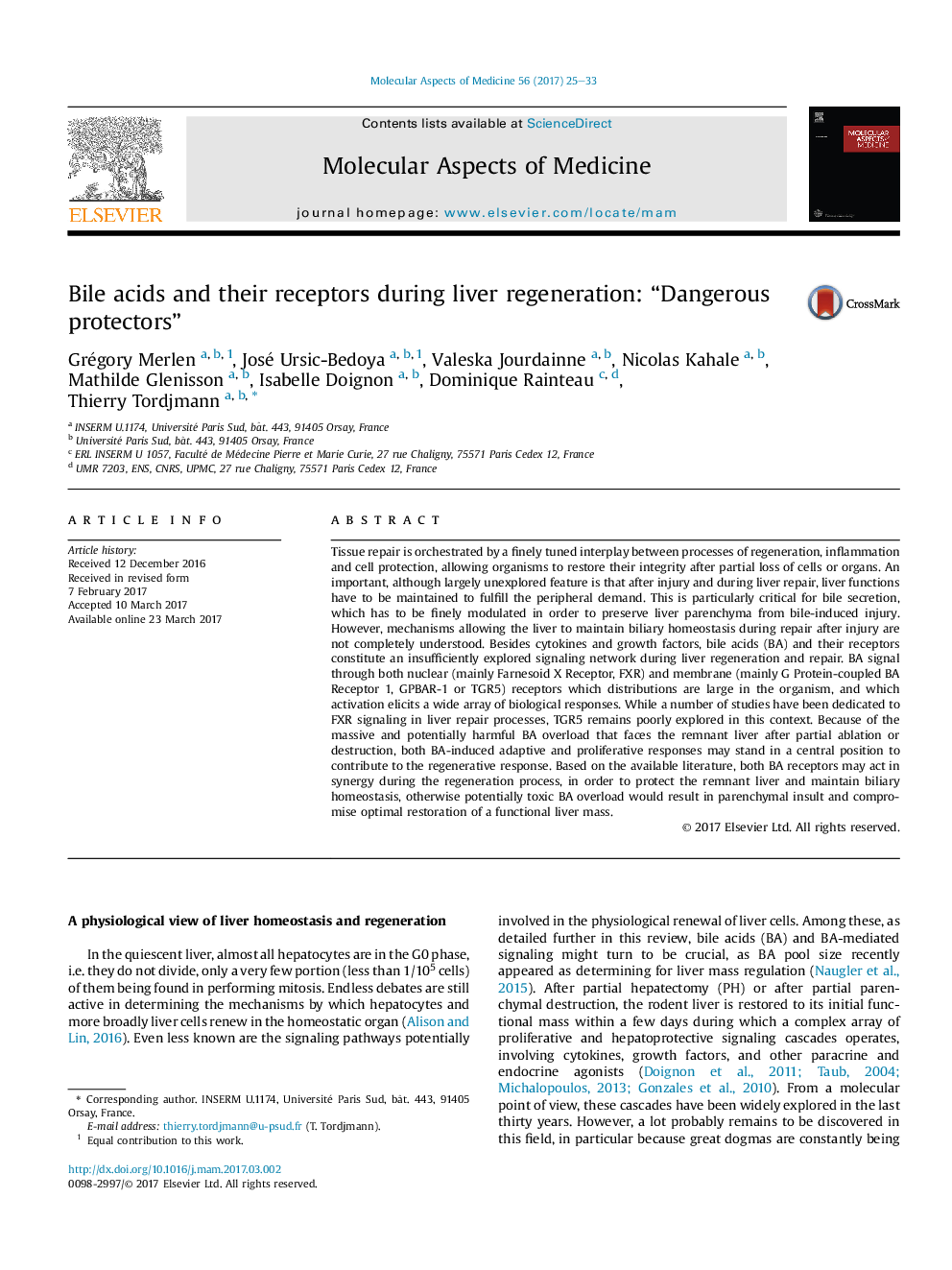| Article ID | Journal | Published Year | Pages | File Type |
|---|---|---|---|---|
| 5513811 | Molecular Aspects of Medicine | 2017 | 9 Pages |
Tissue repair is orchestrated by a finely tuned interplay between processes of regeneration, inflammation and cell protection, allowing organisms to restore their integrity after partial loss of cells or organs. An important, although largely unexplored feature is that after injury and during liver repair, liver functions have to be maintained to fulfill the peripheral demand. This is particularly critical for bile secretion, which has to be finely modulated in order to preserve liver parenchyma from bile-induced injury. However, mechanisms allowing the liver to maintain biliary homeostasis during repair after injury are not completely understood. Besides cytokines and growth factors, bile acids (BA) and their receptors constitute an insufficiently explored signaling network during liver regeneration and repair. BA signal through both nuclear (mainly Farnesoid X Receptor, FXR) and membrane (mainly G Protein-coupled BA Receptor 1, GPBAR-1 or TGR5) receptors which distributions are large in the organism, and which activation elicits a wide array of biological responses. While a number of studies have been dedicated to FXR signaling in liver repair processes, TGR5 remains poorly explored in this context. Because of the massive and potentially harmful BA overload that faces the remnant liver after partial ablation or destruction, both BA-induced adaptive and proliferative responses may stand in a central position to contribute to the regenerative response. Based on the available literature, both BA receptors may act in synergy during the regeneration process, in order to protect the remnant liver and maintain biliary homeostasis, otherwise potentially toxic BA overload would result in parenchymal insult and compromise optimal restoration of a functional liver mass.
